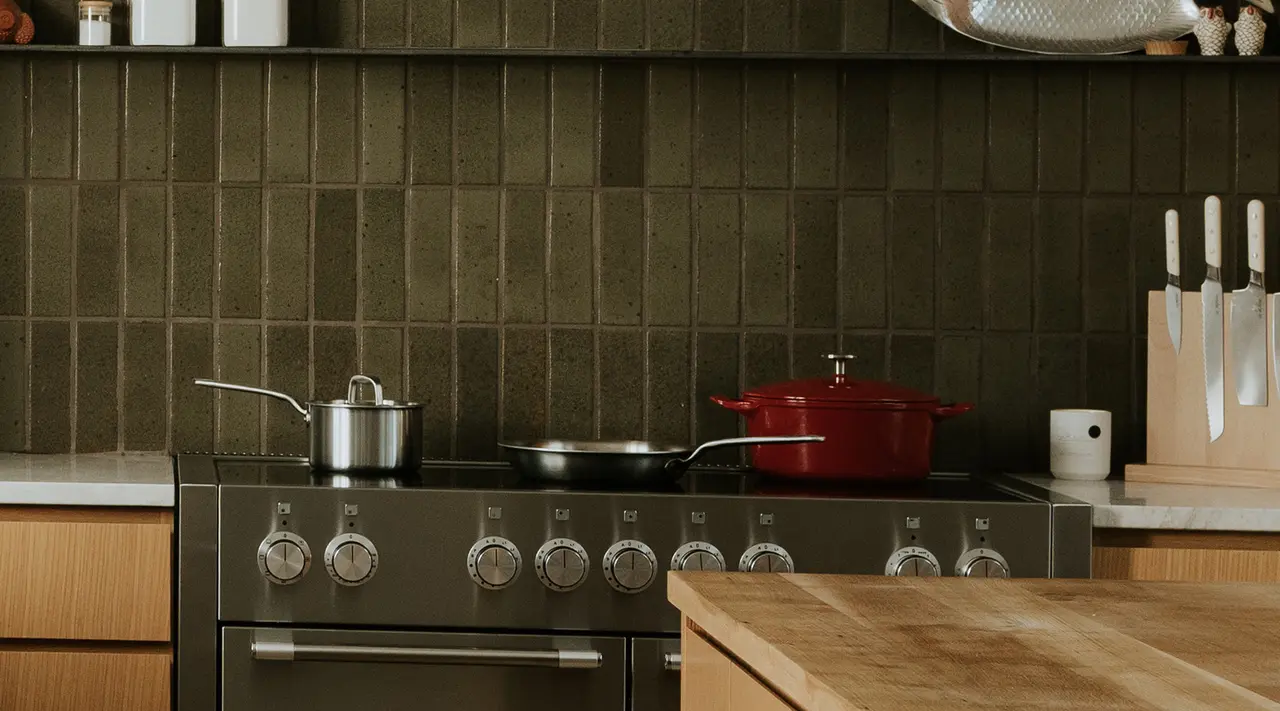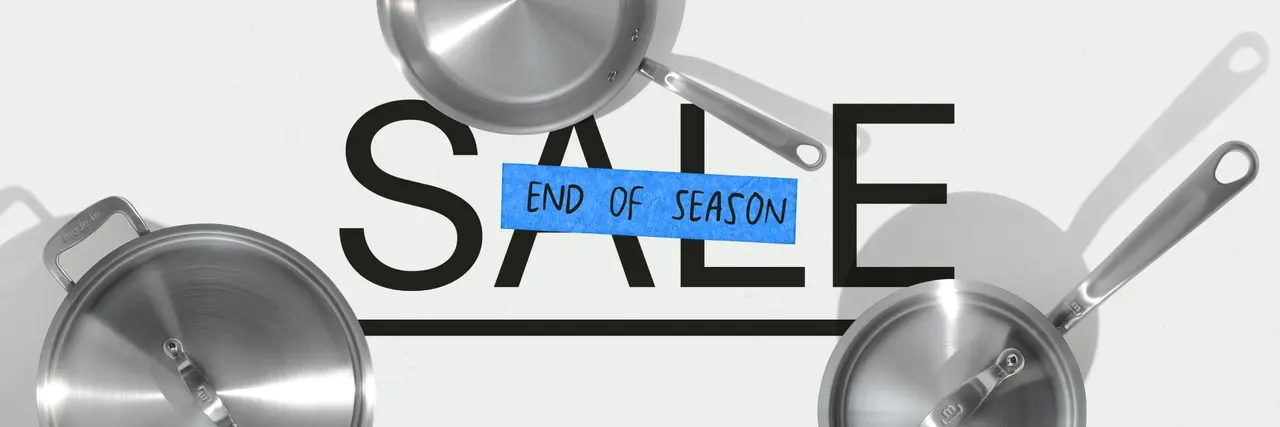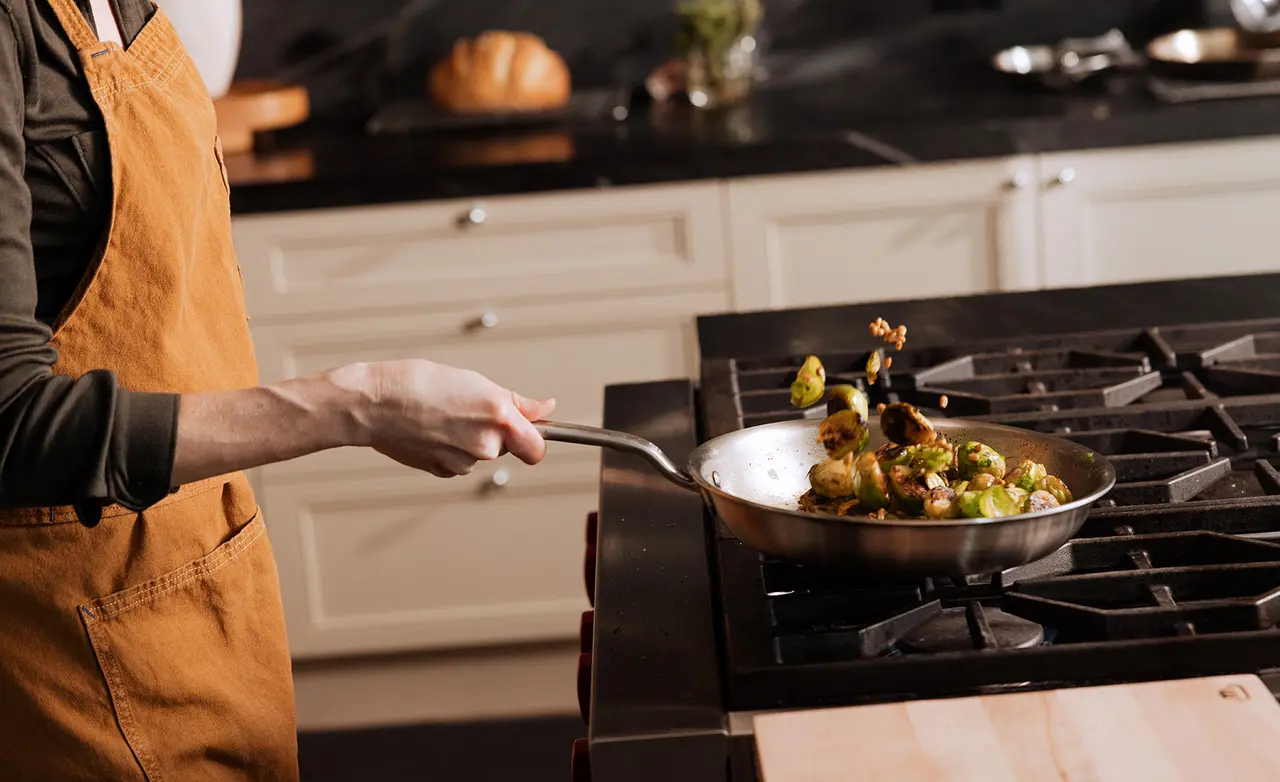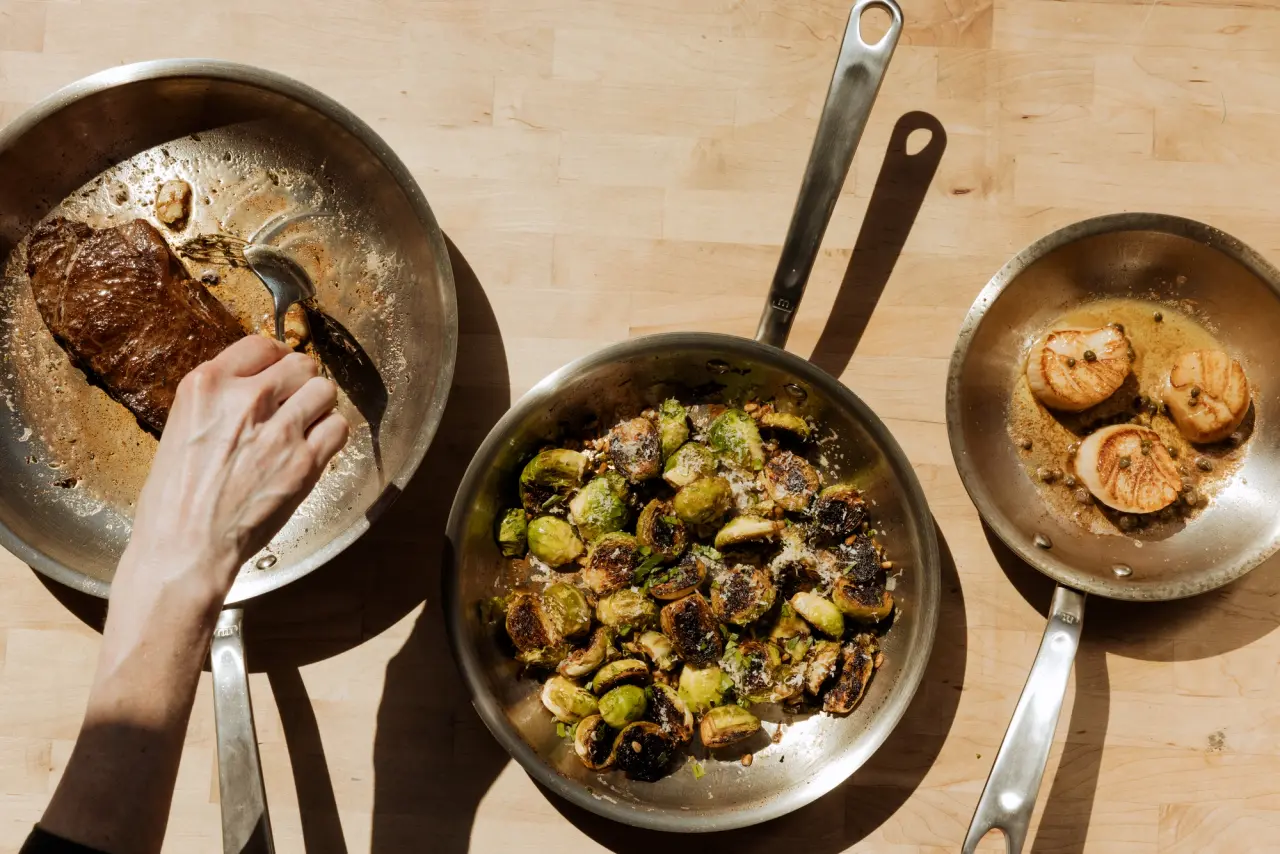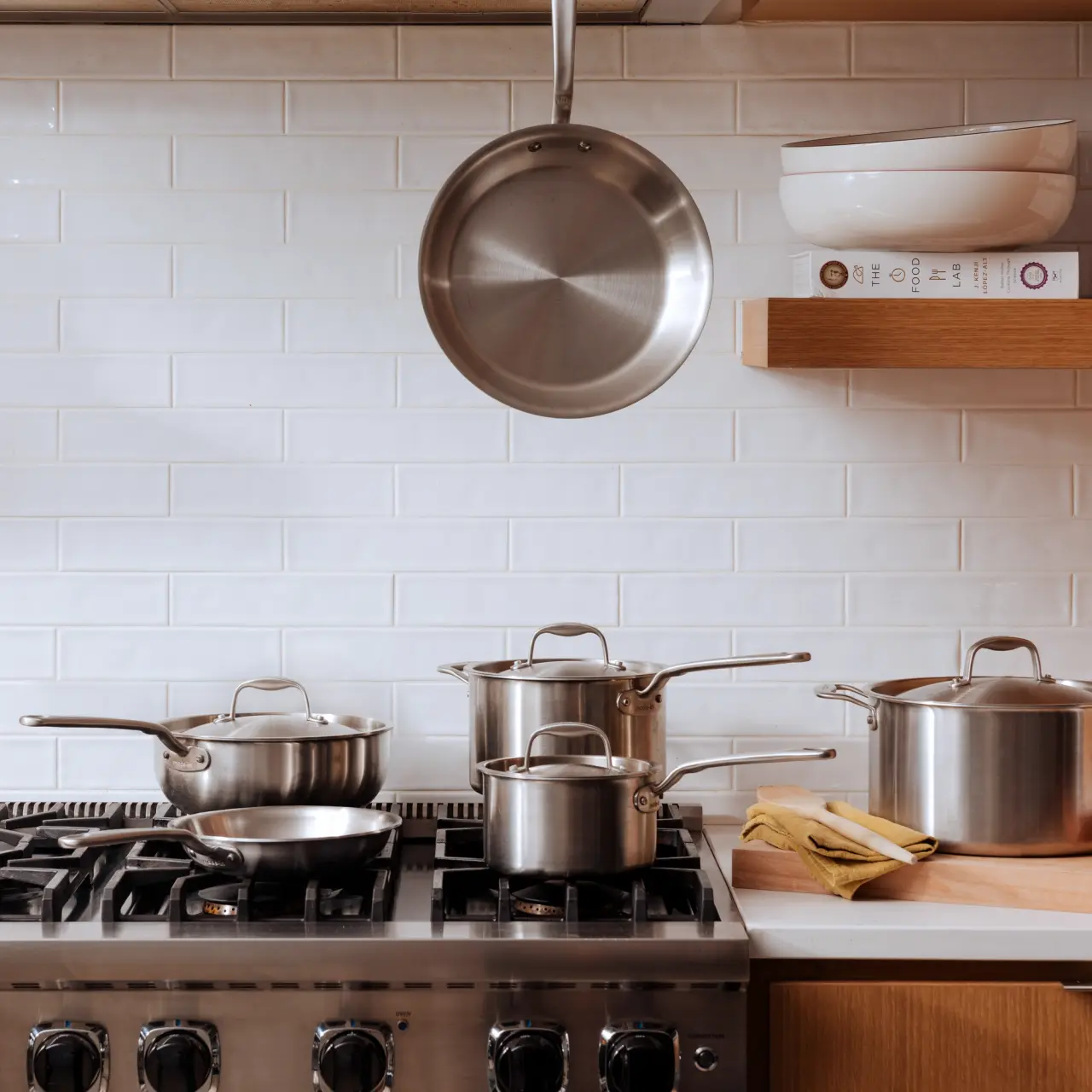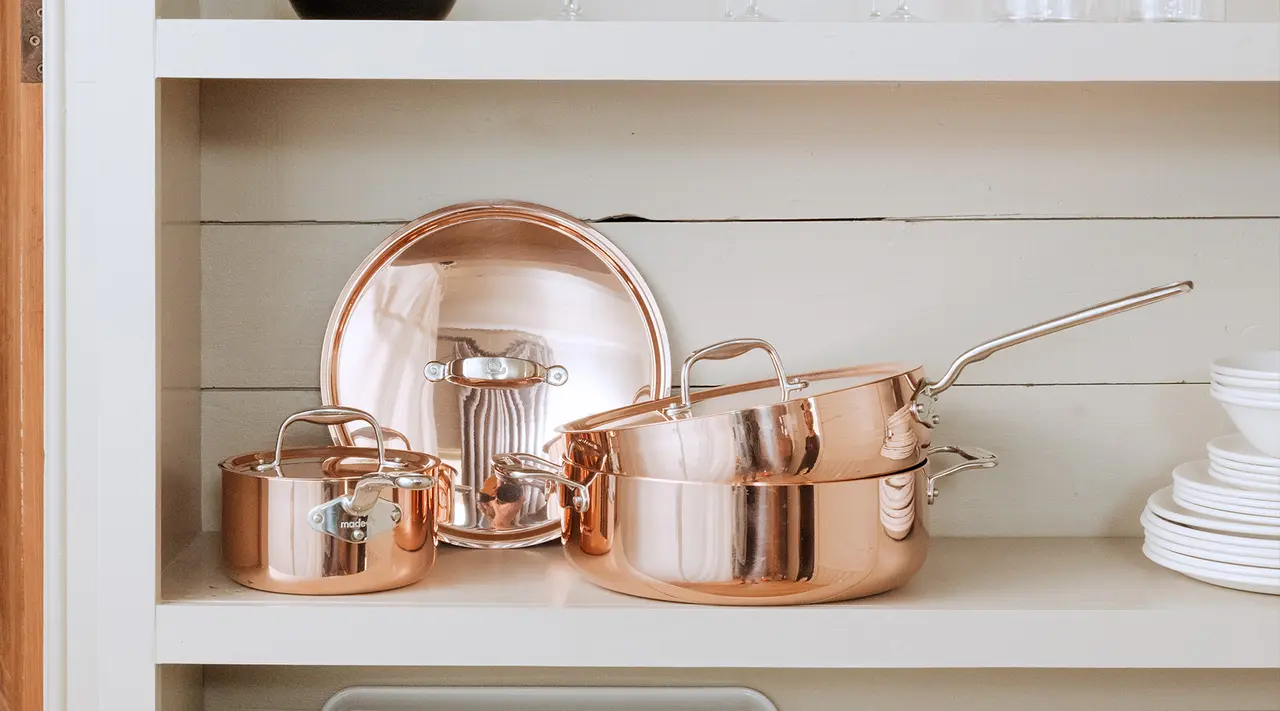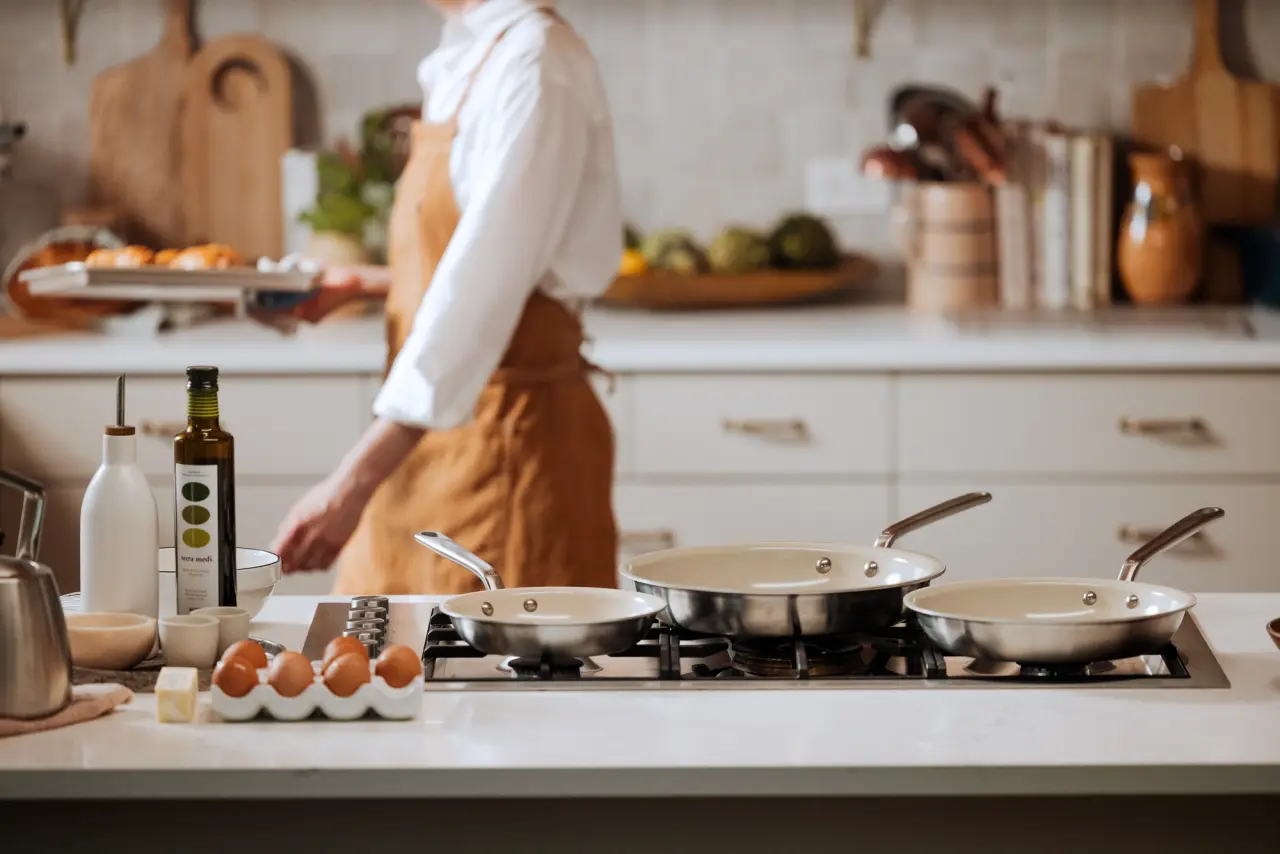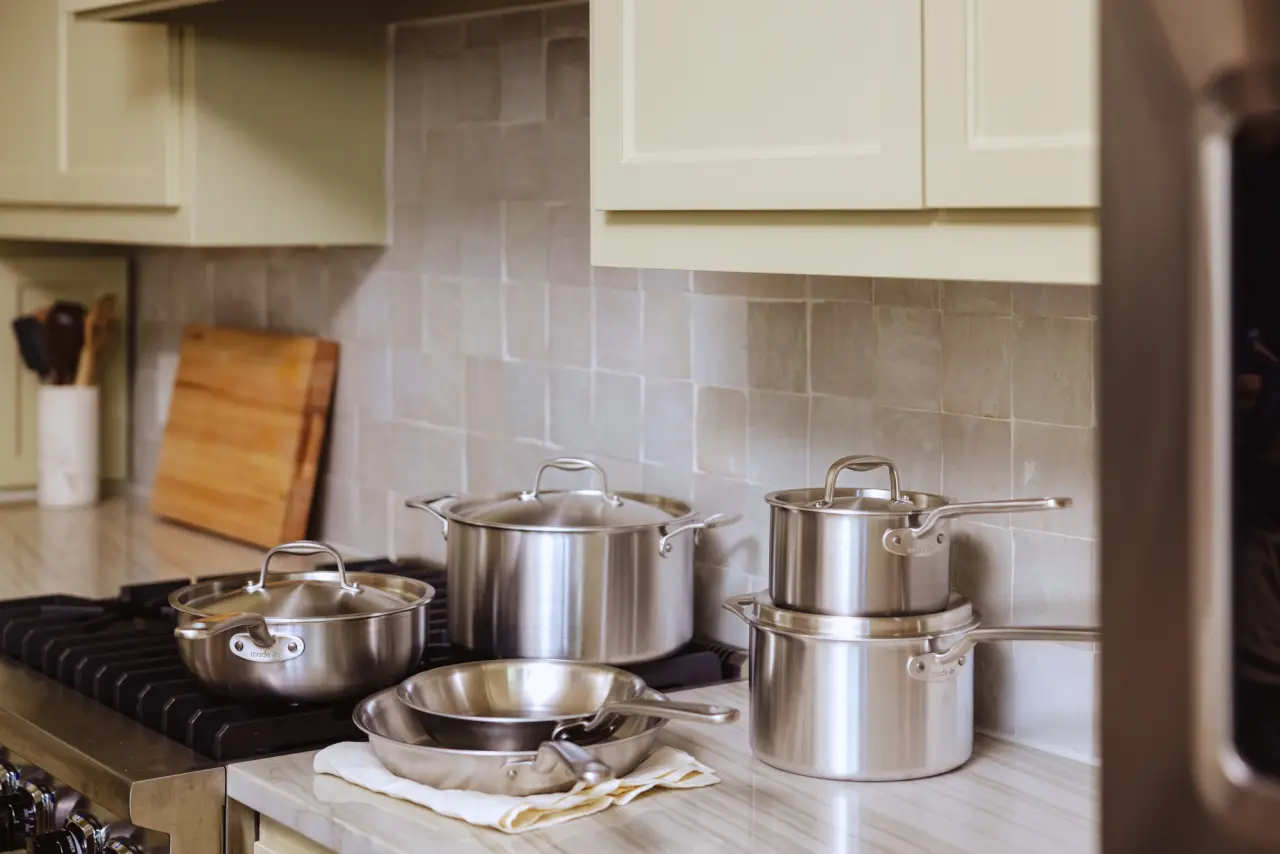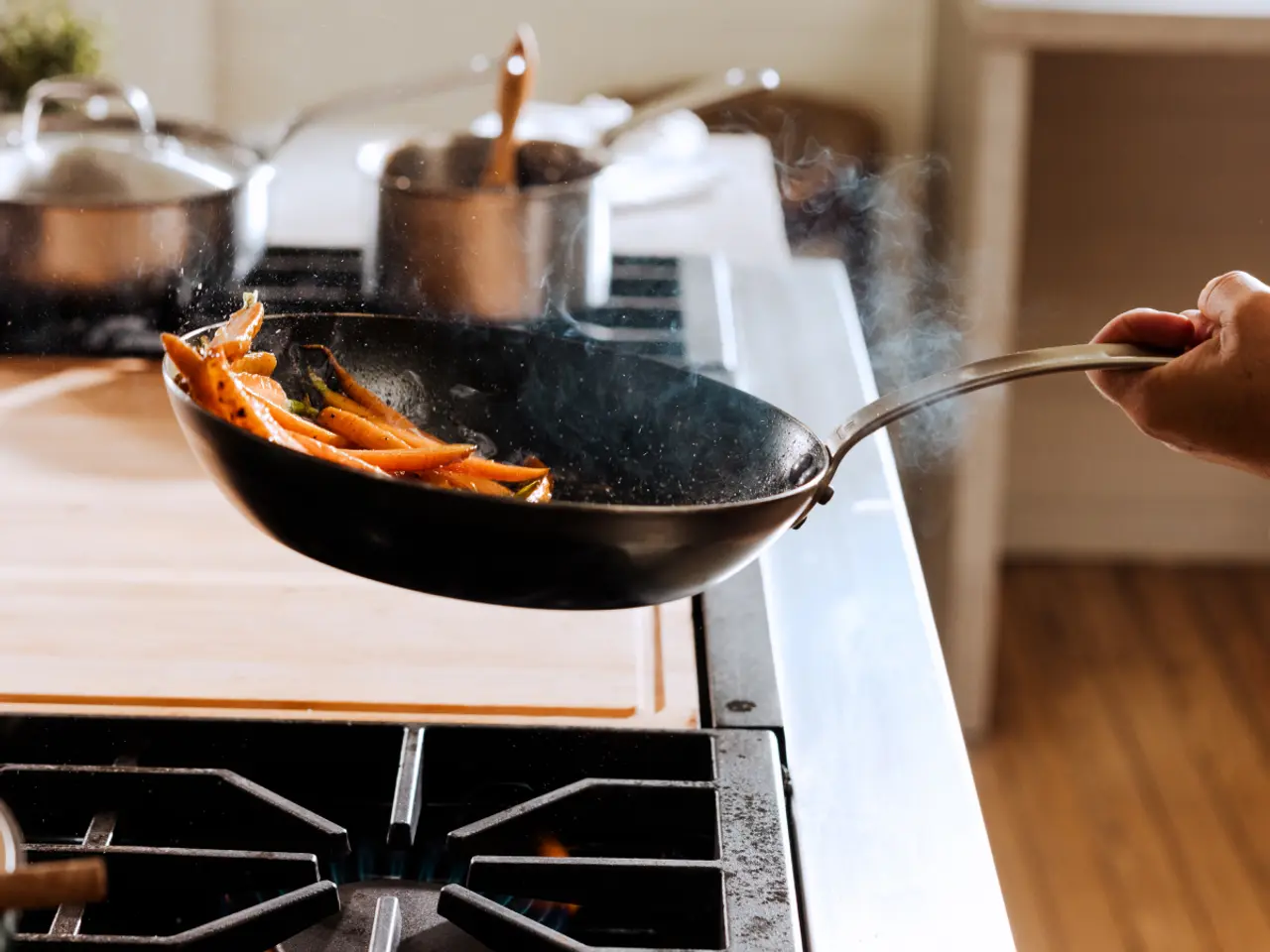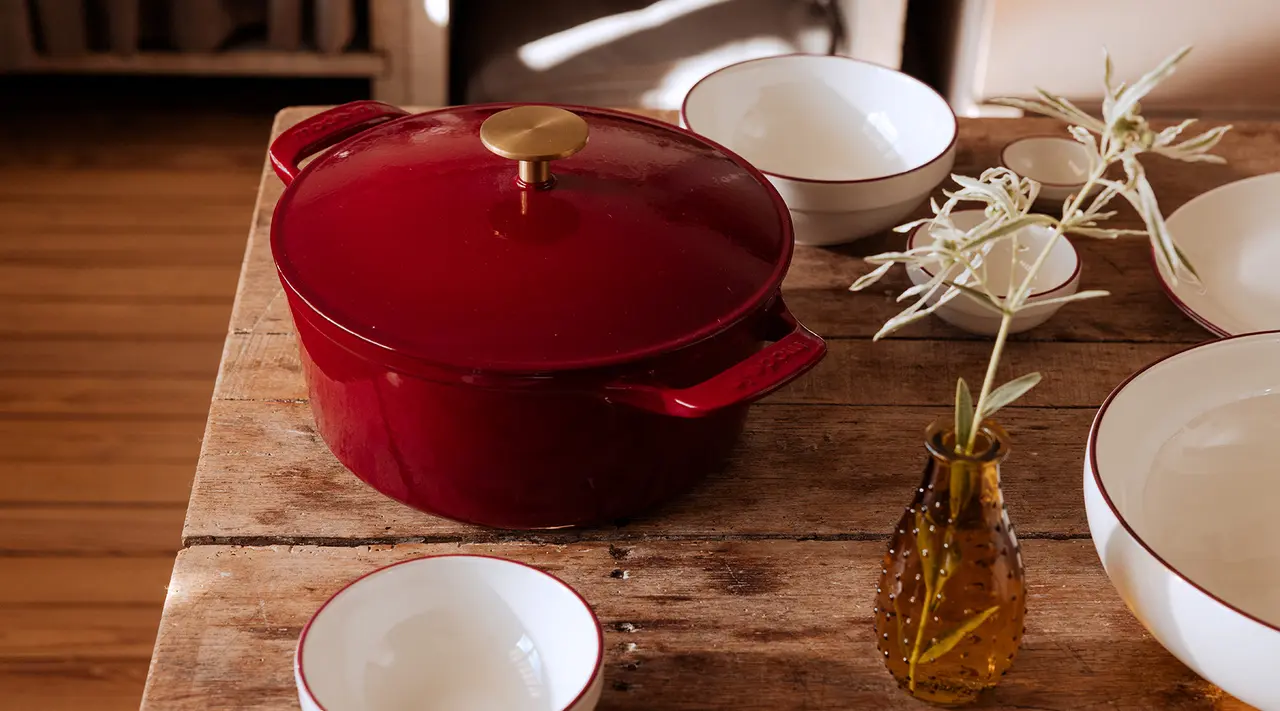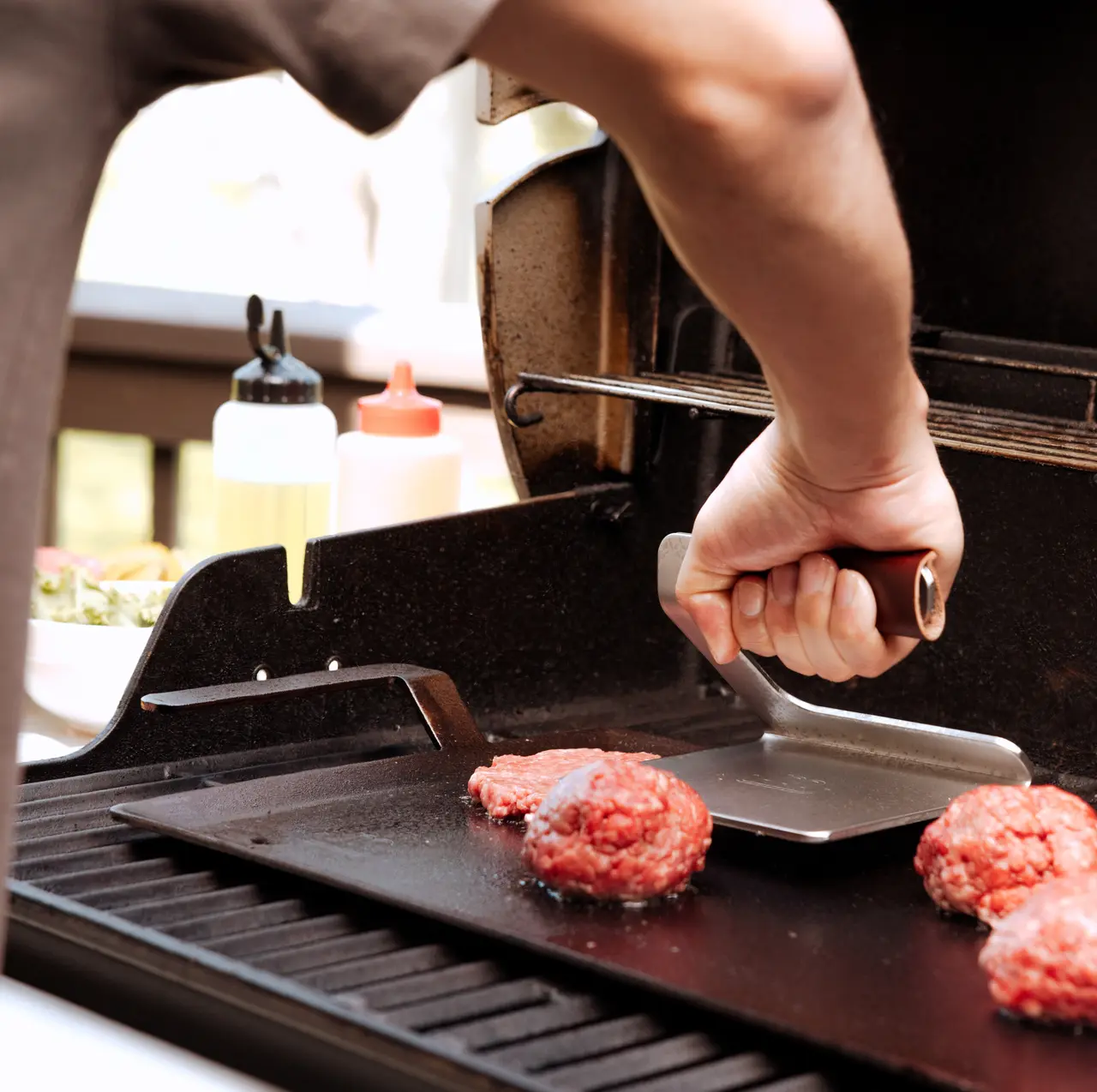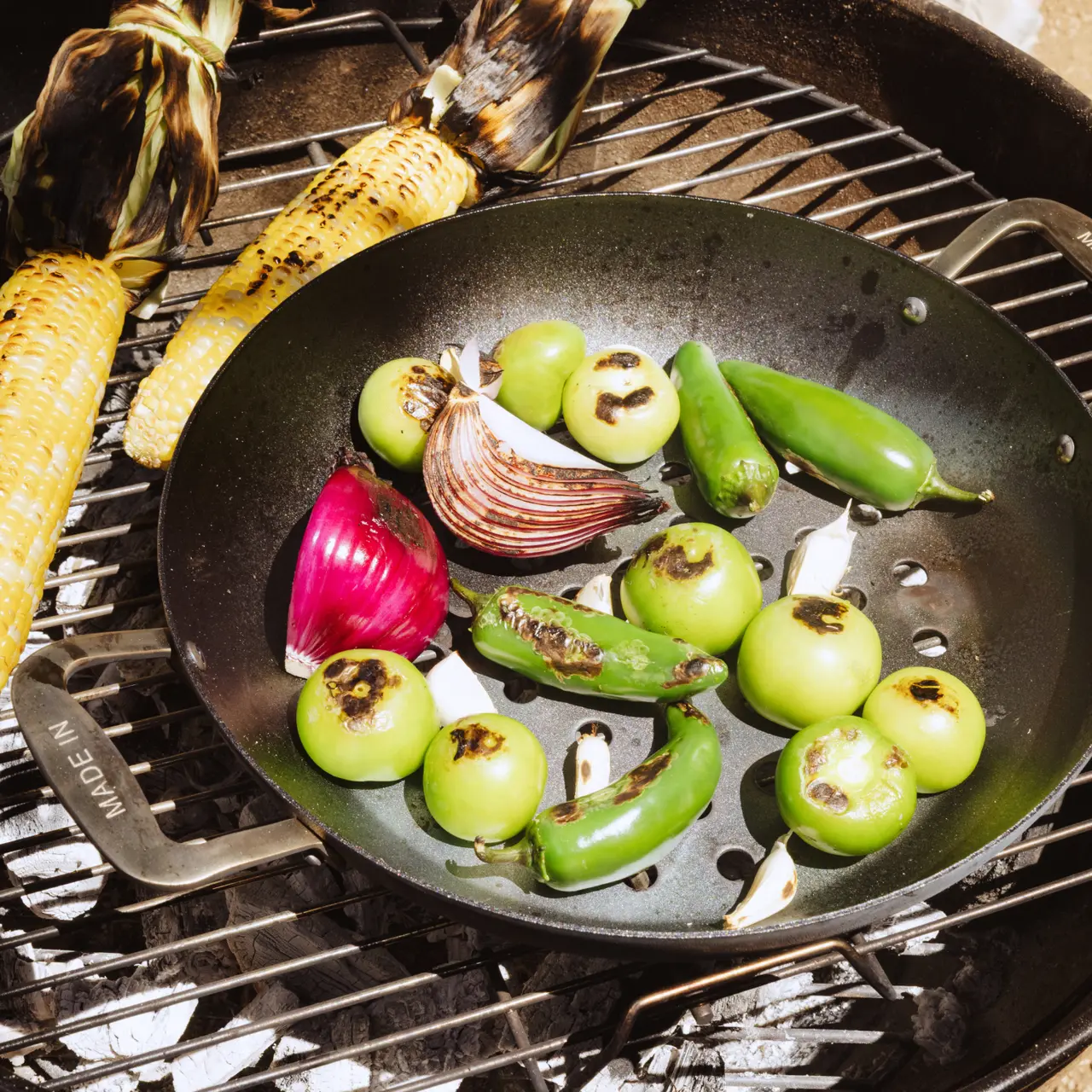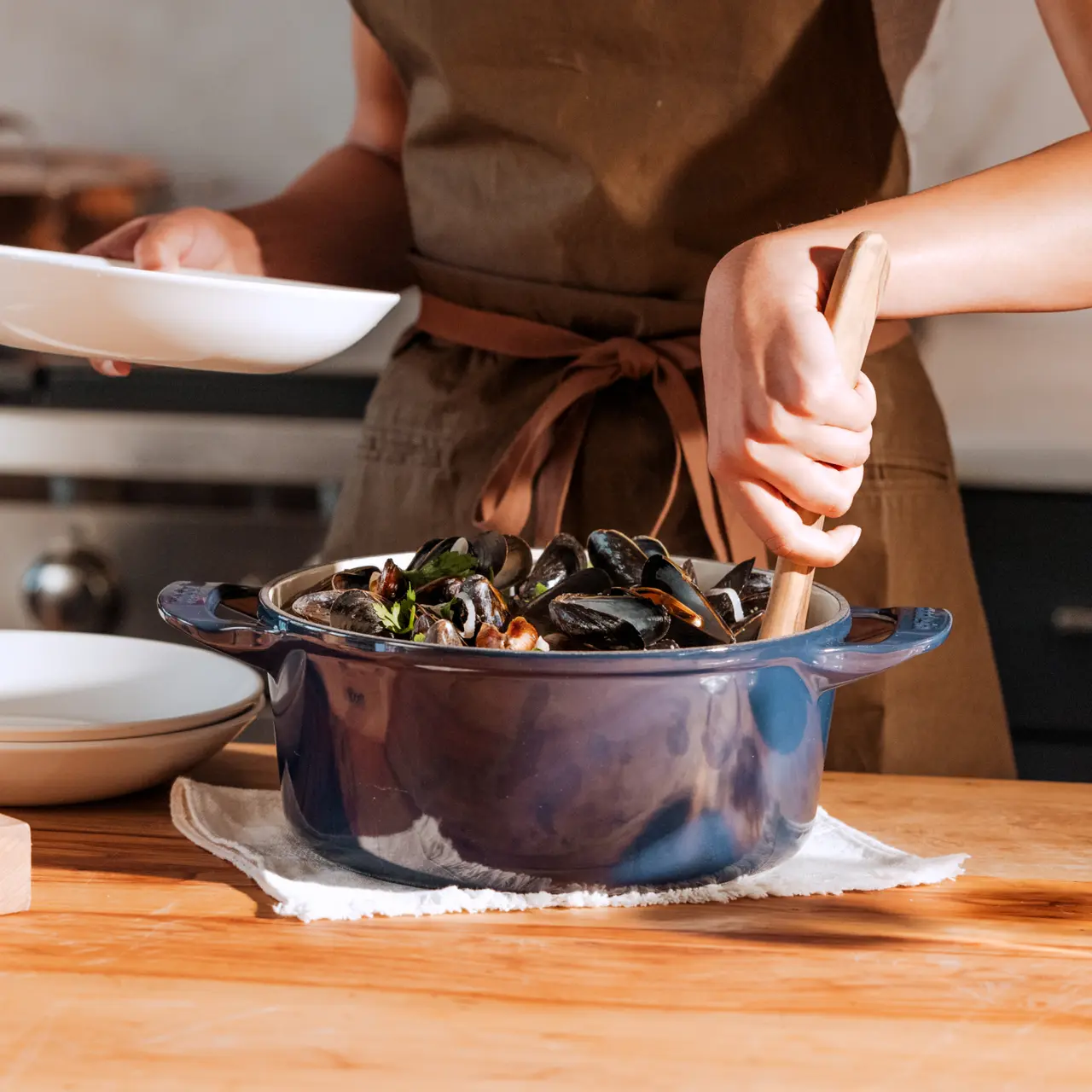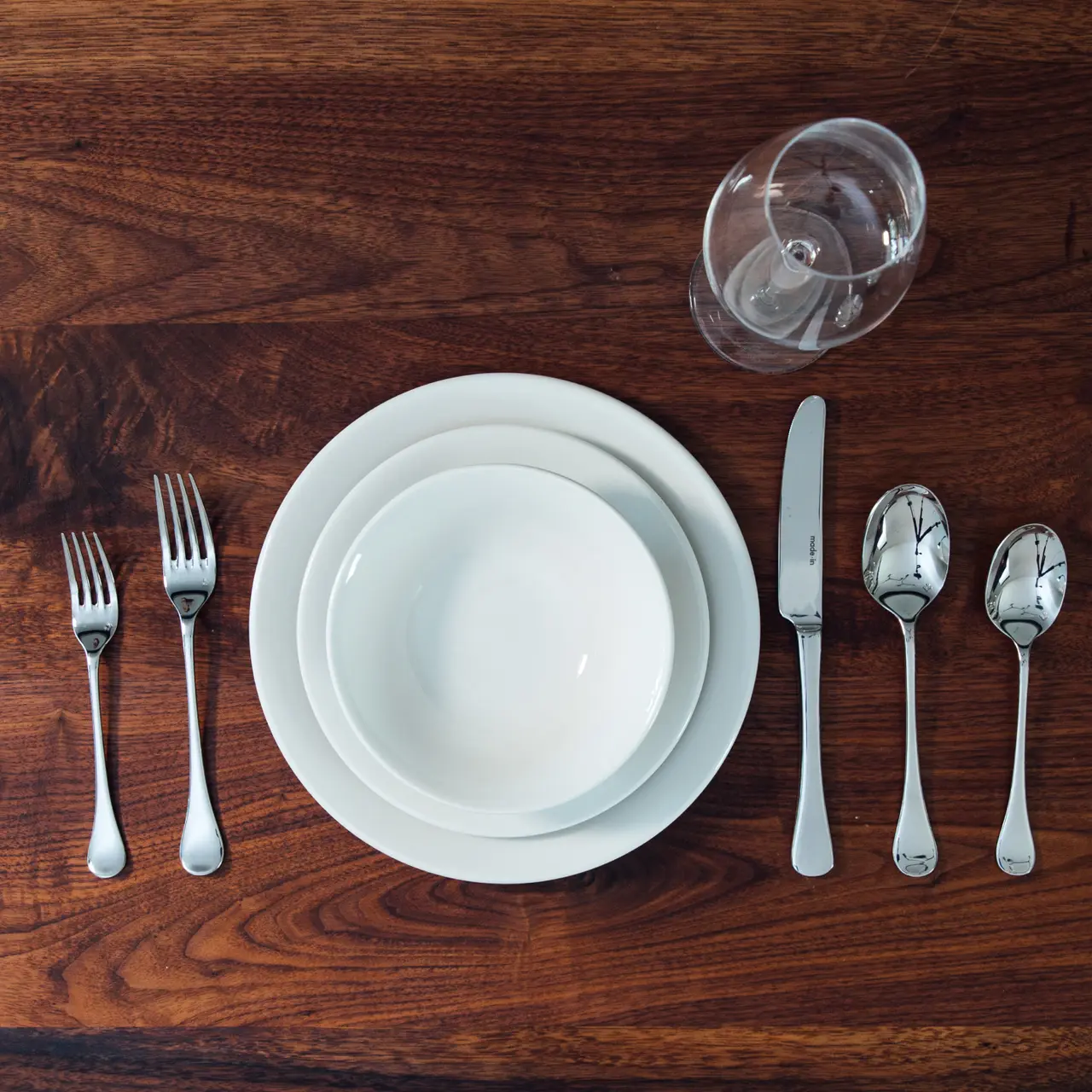In recent years, cookware marketing has taken a sharp turn toward fear-based marketing. Words like non-toxic, PFAS-free, forever chemicals, and chemical-free now dominate packaging, ads, and influencer videos. But while those phrases spark consumer interest, they often come with distorted proof, and some have ended up in class-action lawsuits.
A recent New York Times opinion piece (October 8, 2025) explored this growing phenomenon, calling it “the nonstick panic.” The author argued that brands have increasingly hijacked legitimate environmental and health concerns to sell products, leveraging fear rather than data. The question every home cook should ask is: what’s actually in my pan, and what does the data show?
At Made In, we decided to find out — not just for ourselves, but for the entire category.
The Fear Factor in Cookware Marketing
There’s a reason “non-toxic” sells. It speaks to our most primal instinct: protecting our health and our families. But the cookware market has learned to exploit that instinct.
Some brands build their entire identity around what’s not in their products, rather than how their products perform. Buzzwords like “PFAS-free” are circulating widely, often without any reference to testing standards, detection thresholds, or what those compounds even mean in context. Some companies list dozens of science-sounding compounds that wouldn’t be in cookware in the first place when showing the list of chemicals their cookware is free of. Their goal is to deceive consumers into believing they have the safest product available.
The result is that many consumers feel anxious, even guilty, about using products in their home. As the New York Times op-ed noted, “We’ve replaced Teflon trust with Teflon terror.”
That fear-based marketing cycle creates confusion rather than clarity — and drives a wedge between perception and science.
Bringing Transparency to the Table
To cut through that noise, we commissioned third-party ISO 17025-accredited laboratory testing on both our own cookware and leading competitors — including HexClad, Caraway, and Our Place. For transparency, we funded the testing (about $300 per test per pan); however had no part in the implementation. We simply bought the products from Amazon and shipped them to the labs. Over the next few months, we'll be sending in more pans and continuously updating this article.
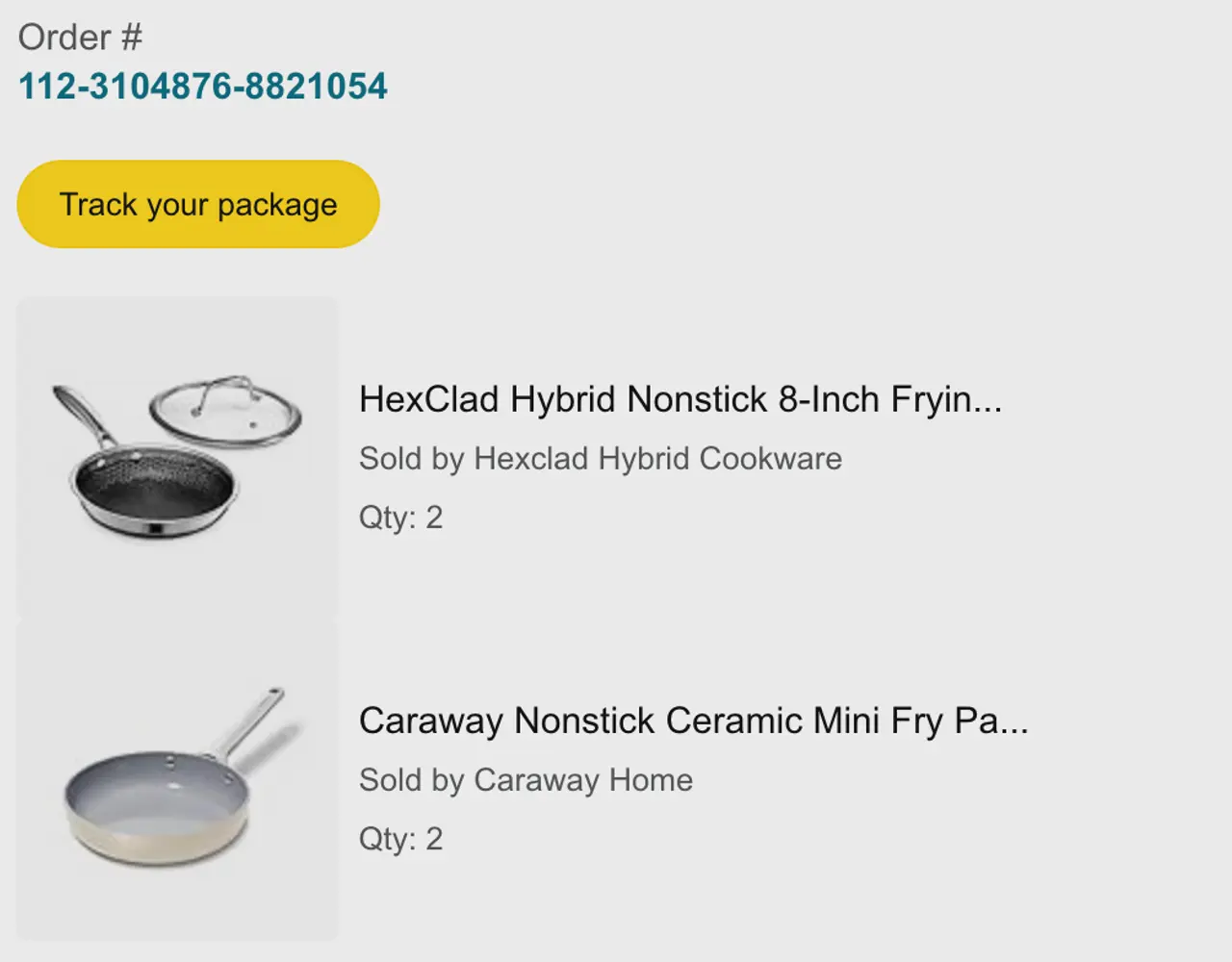
The testing focused on two areas of consumer concern:
- Heavy Metals – Arsenic, Cadmium, Lead, and Mercury
- PFAS Compounds – Over 30 known “forever chemicals,” including PFOA, PFOS, and related fluorinated substances
Each product was tested by Light Labs using FDA-modified methods for precision and reliability. The pans were sent in late September 2025, with the results coming back early October 2025.
Here’s what we found.
The Data: A Level Playing Field
Across all brands tested, the data was remarkably consistent — and far less sensational than the marketing might suggest.
| Category | Result Summary |
|---|---|
| PFAS | None of the tested products contained detectable PFAS compounds. All values were below the laboratory’s limit of quantification, meaning no measurable presence at even the lowest sensitivity levels. |
| Heavy Metals | Every cookware sample — including ours and competitors — tested well within accepted safety limits. The only exception was one HexClad pan that showed a lead value slightly above the 1 ppb limit.* |
In short, the data shows that virtually all high-end cookware brands are equally safe and non-toxic by scientific standards. HexClad was the only one to show elevated levels of lead in their pan; however, the test with HexClad was not perfectly apples-to-apples with the others. HexClad’s pan came with a glass lid, unlike the other pans.
Here was the note from the lab:
I wanted to share some context around the heavy metals result, specifically for HexClad that are about to be pushed out.
Because this was a cookware leaching test, we ran it following FDA guidelines, which means testing with the lid on (since it’s considered part of the product). The lid here had exposed glass and metal, so it could have influenced the elevated results.
HexClad’s pans are worth retesting without a lid and warrant further investigation around lead.
How The Pans Were Tested and Definitions
From the Lab, how PFAS is tested: Per and polyfluoroalkyl substances (PFAS) are extracted after either a heated migration from the pot, pan, or plate into water, or scrapings of two 1-inch by 1-inch squares of the coating of the pot or pan, which is then collected with a Kimwipe saturated with methanol. PFAS are then extracted from the water or saturated Kimwipe sample with buffered acetonitrile using the QuEChERS methodology. The resulting extract is cleaned up with MgSO4, PSA, and GCB, further cleaned up with polymeric weak anion exchange solid phase extraction (SPE), then analyzed by LC-MS/MS. Isotopically-labelled internal standards are used to correct for potential matrix effects.
And how Heavy Metals were tested: Pans were filled with 4% acetic acid solution (food simulant) and simmered for 2 hours, followed by cooling and continued leaching for a total of 24 hrs. The data in this report corresponds to the concentrations of analyte measured in the leachate.
The Problem With “Non-Toxic” as a Marketing Term
Here’s the irony — the data doesn’t support the fear.
Brands that market themselves most aggressively as “non-toxic” often rely on emotional appeal, not scientific distinction. They highlight what’s absent in their products without acknowledging that competitors’ products are already held to the same safety benchmarks.
Furthermore, they may cut corners on the actual product build, using aluminum rivets that come in contact with food. An irony is that aluminum cooking surfaces are something that consumers are trending away from due to their linkages to health issues.
The conversation shouldn’t be about buzzwords. It should be about data transparency and performance integrity.
What “Below LOQ” Means
When lab reports show a result as “below LOQ” — short for Below the Limit of Quantitation — it means the substance was not measurable even at the lowest sensitivity of the testing method.
In practical terms:
- The lab looked for the compound (like PFAS or a heavy metal).
- Their instruments can detect it down to an incredibly small threshold — often parts per billion or trillion.
- If the result is below LOQ, it means the compound was not present at any level high enough to quantify — effectively, non-detectable.
It doesn’t mean the compound is absolutely zero (no test can ever prove absolute zero), but it does mean that any trace amount, if present at all, is far below levels that pose a known risk or can even be reliably measured.
How Consumers Can Make Smarter Choices
If you’re shopping for cookware and care about safety, here’s what matters more than marketing copy or influencer posts:
- Ask for the data. Look for lab-tested results from ISO-certified facilities, not marketing copy. Make your own decisions.
- Consider performance. How a pan heats, retains, and releases food affects your health and cooking experience more than a label ever will.
- Think long term. A product that lasts decades reduces waste and environmental impact — which is the ultimate form of sustainability and consumer integrity.
- Beware of absolutes. Any company claiming “100% toxin-free” should be seen with skepticism. Both the scientific understanding and data abilities are changing monthly. What’s important is that you believe the people behind the company have integrity and are doing the work to remain best-in-class.
- Understand the country of origin, as different countries have varying standards of manufacturing and health. The European Union, Sweden and the United States are held to some of the highest, if not the highest, safety standards in the world, whereas China, India, and others rank among the lowest. If safety and health are top decision-making criteria for you, consider where your product is made.
Transparency isn’t about fear — it’s about facts.
The Data-Driven Truth
Our full COA data, covering more than ten cookware categories, tells a clear story:
- No detectable PFAS in any sample.
- Heavy metal readings were well below regulatory limits across all brands.
- A single isolated outlier for lead among one competitor’s sample — not a systemic issue. Further investigation is needed here.
The broader conclusion is one that’s easy to miss amid social media noise: most reputable cookware brands already operate within the same safe, non-toxic standards.
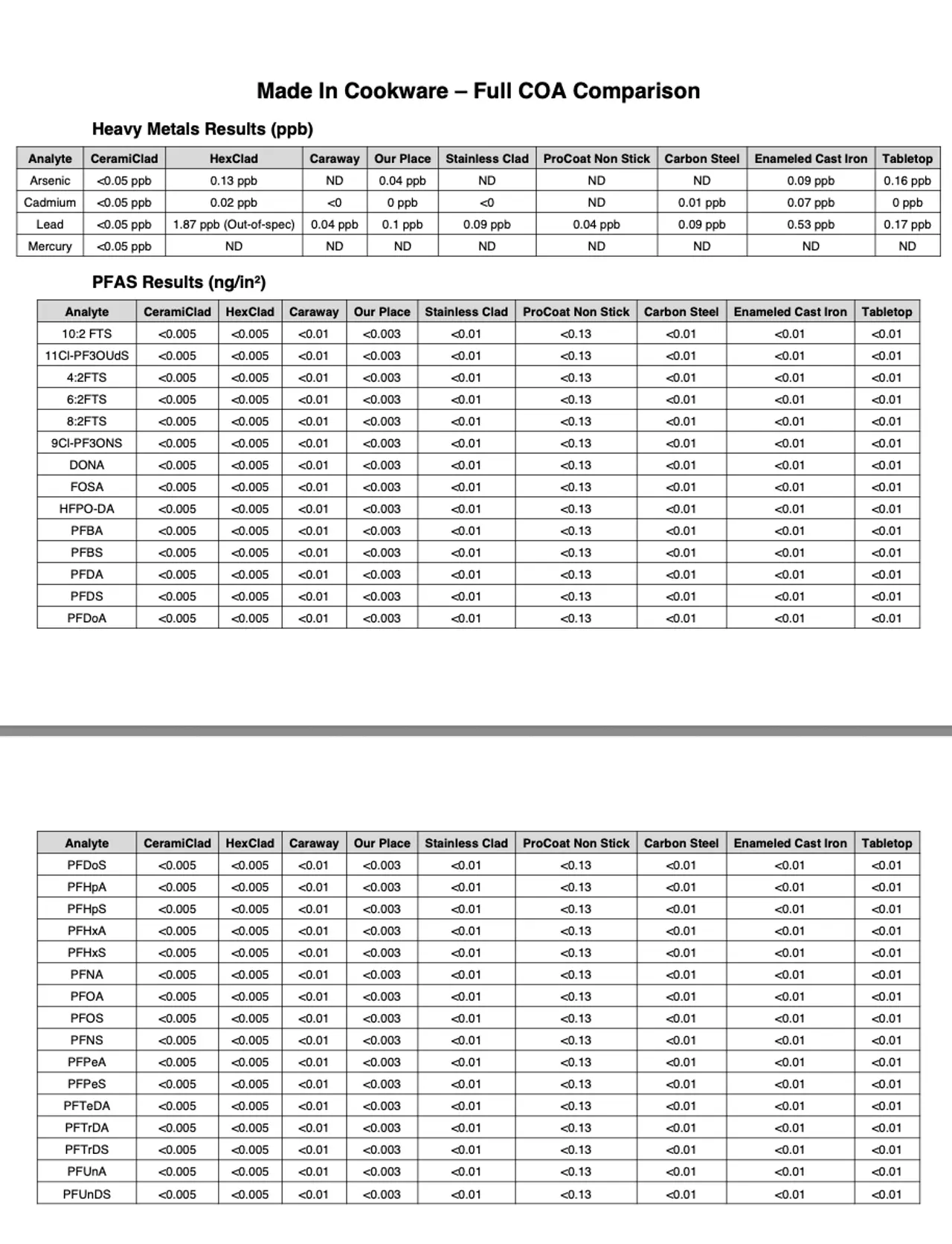
So, if all the products are equally safe, the real differentiators become performance, design, and trust.
What Made In Believes

At Made In, we’ve always approached cookware the way professional chefs do: performance first, without compromise. Health and safety aren’t selling points — they’re standards.
We also believe that safety is just the beginning. Once that box is checked, the real work begins: crafting cookware that delivers precision heat control, durability that lasts decades, and the performance demanded by world-class kitchens.
Professional chefs don’t choose cookware based on fear. They choose it because it performs flawlessly, meal after meal, year after year. That’s what Made In stands for — a commitment to performance, built on a foundation of trust.
Lastly, if fear is truly driving your choice, we highly recommend non-reactive, no-coating pans such as Stainless Clad or naturally seasoned Carbon Steel pans. We believe this is the best way to future-proof your decision and fall in love with a lifetime of high performance.
